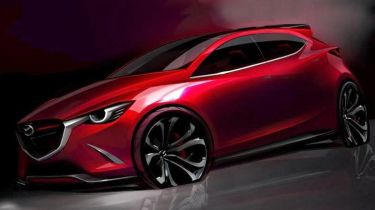Next-gen petrol engines to make Mazdas as clean as electric cars
High-tech Mazda petrol engines to offer CO2 emissions that equal well to wheel emissions of today’s EVs

Mazda has confirmed details about its next Skyactiv petrol engines. These will be fitted to its next generation of cars, likely to begin with the next Mazda6 in 2018, and will offer a 30 per cent improvement in efficiency.
That means today’s 118bhp Mazda3 Skyactiv petrol would improve from 55.4mpg and 119g/km of CO2 emissions, to around 70mpg and under 85g/km.
However, despite the claims, the new engines are only just being testing on dynos in Mazda’s R&D centre in Japan, and are yet to power a car.
A third generation of Skyactiv petrol engine, due in 2025, improves this to around 50g/km, with well-to-wheel CO2 emissions so low that they’re close that those of current electric cars.
Mazda to introduce HCCI engine tech
Current Skyactiv petrol engines are naturally aspirated, rather than turbocharged and downsized, as Mazda argues the real-world efficiency benefits and driveability are better.
The next-gen engine, called Skyactiv-G Generation 2, will adopt a Homogenous Charge Combustion Ignition (HCCI) lean burn ignition system.
The current Skyactiv petrol engine features a diesel-like 14:1 compression ratio. But Mazda’s next petrol takes this to 18:1, which means that the piston’s compression alone can cause the fuel mixture to ignite, just like a diesel.
This works at up to 50 per cent throttle loads, allowing the engine to run very lean amounts of fuel, but with almost no NOx and particulate emissions, making it as fuel efficient as a diesel, but cleaner than a petrol.
HCCI does limit power, so the engine switches over to conventional spark ignition, with higher fuel to air ratio, when you press the throttle harder.
Getting this process to happen smoothly is very difficult, too, although Joachim Kunz, senior manager at Mazda’s European R&D centre in Germany, told us that the goal is to ensure that the switching from HCCI to spark ignition will be hard for a driver to detect.
Mercedes has already tried HCCI, with the DiesOtto engine fitted to its 2007 F700 concept. This used a hybrid motor to fill in the gap as the engine switched from HCCI to conventional spark ignition.
New Mazda hybrid technology in the pipeline
In addition to pure petrol engines, Mazda has begun selling a hybrid version of the 3 in Japan. This mates the hybrid system from the Toyota Prius to the Skyactiv petrol engine, and gives 88.3mpg.
But further down the line, Mazda hopes to develop its i-ELOOP system, which stores brake energy in a capacitor, for hybrid use. At present, this recharges fully when you brake in about 10 seconds, and that generates enough electricity to power the car’s electrical system for 80 seconds.
The plan is to use the capacitor to power a hybrid motor. As the capacitor is so efficient, this would allow Mazda to use a smaller, lighter motor and battery than current hybrid systems, while the brake energy regeneration is such that the engine would hardly ever need to be used to recharge the battery, thus saving fuel.
Mazda claims that this system would be more efficient than a current electric car, once you take into account the well-to-wheel emissions (CO2 generated by power stations when making electricity and so forth), giving CO2 emissions of less than 50g/km.
What’s more, the tech Mazda uses is already established and is relatively inexpensive, when compared to other electric or hybrid solutions.
Mazda claims that the cost of meeting the EU’s fleet average CO2 emissions of 95g/km by 2020 will add €4000 to the cost of a new car, while cutting this to the proposed 70g/km by 2025 will add a further €8000. But by doing this with Skyactiv, this costs will be cut.
Read more on the latest green car and engine technology
• Best hybrid cars on sale• Best electric cars on sale• Peugeot unveils new PureTech three-cylinder engines





